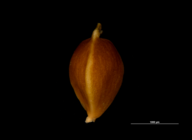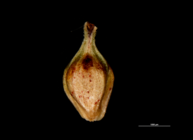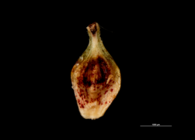Cyperaceae taxon details
Carex binervis Sm.
1678147 (urn:lsid:marinespecies.org:taxname:1678147)
accepted
Species
Carex binervis f. nigrescens Druce · unaccepted
Carex binervis var. alpina Drejer · unaccepted
Carex binervis var. ovata Merino · unaccepted
Carex distans Lightf. · unaccepted
Carex distans subsp. binervis (Sm.) Husn. · unaccepted
Carex distans subsp. binervis (Sm.) Douin · unaccepted
Carex fulva Hornem. · unaccepted
Carex gandogeri H.Lév. ex Gand. · unaccepted
Carex gandogeri H.Lév. & Vaniot · unaccepted
Carex multinervis Krock. · unaccepted
Carex multinervis Krock. ex Steud. · unaccepted
Carex ovata Merino · unaccepted
Carex rodriguesii Merino · unaccepted
Carex rodriguezii Merino · unaccepted
Carex sadleri E.F.Linton · unaccepted
Carex versicolor Dumort. · unaccepted
Trasus binervis (Sm.) Gray · unaccepted
Trasus binervis var. androgynus Gray · unaccepted
Trasus binervis var. ramosus Gray · unaccepted
- Forma Carex binervis f. nigrescens Druce accepted as Carex binervis Sm.
- Variety Carex binervis var. alpina Drejer accepted as Carex binervis Sm.
- Variety Carex binervis var. ovata Merino accepted as Carex binervis Sm.
- Variety Carex binervis var. tingitana Maire accepted as Carex paulo-vargasii Luceño & Marín
terrestrial
Smith, J. E. (1800). Descriptions of five new British species of Carex. <em>Transactions of the Linnean Society of London.</em> 5: 264-273., available online at https://www.biodiversitylibrary.org/page/12897943#page/308/mode/1up
page(s): 268 [details]
page(s): 268 [details]
Description Densamente cespitosa. Tallos fértiles de (40)60-130(170) cm. Hojas de (2)3,5-5(11) mm de anchura, planas, más raramente...
Description Densely caespitose. Fertile stems (40)60–130(170) cm tall. Leaves (2)3.5–5(11) mm wide, flat, more rarely folded,...
Taxonomic remark Source in seed data: wcs Update namepublishedIn from Trans. Linn. Soc. London 5: 268. 1800 to Trans. Linn. Soc. London 5:...
Description Densamente cespitosa. Tallos fértiles de (40)60-130(170) cm. Hojas de (2)3,5-5(11) mm de anchura, planas, más raramente plegadas, más cortas que los tallos; vainas basales anaranjadas y/o teñidas de púrpura; lígula de (0,7)1,5-3,5(7) mm de longitud. Bráctea inferior foliácea, más corta que la inflorescencia, envainadora. Inflorescencia en racimo de espigas de aspecto diferente, la superior –más raramente las dos superiores– masculina, fusiforme; las 2-4 inferiores femeninas, cilíndricas, separadas, erectas o la inferior colgante. Glumas femeninas ovadas, mucronadas, de color rojo-purpúreo oscuro. Utrículos de (2,5)3-4(5) mm de longitud, variablemente teñidos de rojo, mates, suberectos, con todos los nervios perceptibles, pero solo los dos laterales muy prominentes, suavemente estrechados –con menos frecuencia bruscamente contraídos– en un pico de (0,5)0,8-1,2(1,4) mm, más o menos escábrido, bífido. Aquenios de contorno elíptico. 3 estigmas. 2n=72, 74. Brezales y prados húmedos, bordes de arroyos y turberas. [details]
Description Densely caespitose. Fertile stems (40)60–130(170) cm tall. Leaves (2)3.5–5(11) mm wide, flat, more rarely folded,...
Description Densely caespitose. Fertile stems (40)60–130(170) cm tall. Leaves (2)3.5–5(11) mm wide, flat, more rarely folded, shorter than the stems; basal sheaths orange and/or tinged with purple; ligule (0.7)1.5–3.5(7) mm long. Lower bract leafy, shorter than the inflorescence, sheathing. Inflorescence a raceme of spikes of different appearance, the upper one – more rarely the upper two – male, fusiform; the 2–4 lower ones female, cylindrical, separated, erect or the lowermost pendulous. Female glumes ovate, mucronate, dark reddish-purple. Utricles (2.5)3–4(5) mm long, variably tinged with red, dull, suberect, with all veins visible, but only the two lateral ones very prominent, gradually – less frequently abruptly – narrowed into a beak (0.5)0.8–1.2(1.4) mm long, somewhat scabrous, bifid. Achenes elliptic in outline. 3 stigmas. 2n=72, 74. Heathlands and wet meadows, stream margins and peat bogs. [details]
Taxonomic remark Source in seed data: wcs Update namepublishedIn from Trans. Linn. Soc. London 5: 268. 1800 to Trans. Linn. Soc. London 5:...
Taxonomic remark Source in seed data: wcs Update namepublishedIn from Trans. Linn. Soc. London 5: 268. 1800 to Trans. Linn. Soc. London 5: 268 (1800), information provided by Alan E. on email Jun. 07 2021 More details could be found in [details]
Cyperaceae Working Group. (2025). [see How to cite]. Global Cyperaceae Database. Carex binervis Sm.. Accessed at: https://cyperaceae.org/aphia.php?p=taxdetails&id=1678147 on 2025-09-11
Date
action
by
2024-12-10 11:47:54Z
unchecked
db_admin
![]() The webpage text is licensed under a Creative Commons
Attribution 4.0 License
The webpage text is licensed under a Creative Commons
Attribution 4.0 License
Nomenclature
original description
Smith, J. E. (1800). Descriptions of five new British species of Carex. <em>Transactions of the Linnean Society of London.</em> 5: 264-273., available online at https://www.biodiversitylibrary.org/page/12897943#page/308/mode/1up
page(s): 268 [details]
basis of record Plants of the World Online (POWO). , available online at https://powo.science.kew.org/ [details]
page(s): 268 [details]
basis of record Plants of the World Online (POWO). , available online at https://powo.science.kew.org/ [details]
 Present
Present  Inaccurate
Inaccurate  Introduced: alien
Introduced: alien  Containing type locality
Containing type locality
Syntype LE 00010176, geounit England [details]
From editor or global species database
Description Densamente cespitosa. Tallos fértiles de (40)60-130(170) cm. Hojas de (2)3,5-5(11) mm de anchura, planas, más raramente plegadas, más cortas que los tallos; vainas basales anaranjadas y/o teñidas de púrpura; lígula de (0,7)1,5-3,5(7) mm de longitud. Bráctea inferior foliácea, más corta que la inflorescencia, envainadora. Inflorescencia en racimo de espigas de aspecto diferente, la superior –más raramente las dos superiores– masculina, fusiforme; las 2-4 inferiores femeninas, cilíndricas, separadas, erectas o la inferior colgante. Glumas femeninas ovadas, mucronadas, de color rojo-purpúreo oscuro. Utrículos de (2,5)3-4(5) mm de longitud, variablemente teñidos de rojo, mates, suberectos, con todos los nervios perceptibles, pero solo los dos laterales muy prominentes, suavemente estrechados –con menos frecuencia bruscamente contraídos– en un pico de (0,5)0,8-1,2(1,4) mm, más o menos escábrido, bífido. Aquenios de contorno elíptico. 3 estigmas. 2n=72, 74. Brezales y prados húmedos, bordes de arroyos y turberas. [details]Description Densely caespitose. Fertile stems (40)60–130(170) cm tall. Leaves (2)3.5–5(11) mm wide, flat, more rarely folded, shorter than the stems; basal sheaths orange and/or tinged with purple; ligule (0.7)1.5–3.5(7) mm long. Lower bract leafy, shorter than the inflorescence, sheathing. Inflorescence a raceme of spikes of different appearance, the upper one – more rarely the upper two – male, fusiform; the 2–4 lower ones female, cylindrical, separated, erect or the lowermost pendulous. Female glumes ovate, mucronate, dark reddish-purple. Utricles (2.5)3–4(5) mm long, variably tinged with red, dull, suberect, with all veins visible, but only the two lateral ones very prominent, gradually – less frequently abruptly – narrowed into a beak (0.5)0.8–1.2(1.4) mm long, somewhat scabrous, bifid. Achenes elliptic in outline. 3 stigmas. 2n=72, 74. Heathlands and wet meadows, stream margins and peat bogs. [details]
Taxonomic remark Source in seed data: wcs Update namepublishedIn from Trans. Linn. Soc. London 5: 268. 1800 to Trans. Linn. Soc. London 5: 268 (1800), information provided by Alan E. on email Jun. 07 2021 More details could be found in [details]
To Biodiversity Heritage Library (1 publication) (from synonym Carex gandogeri H.Lév. ex Gand.)
To Biodiversity Heritage Library (1 publication) (from synonym Carex gandogeri H.Lév. & Vaniot)
To Biodiversity Heritage Library (1 publication) (from synonym Carex sadleri E.F.Linton)
To Biodiversity Heritage Library (1 publication) (from synonym Carex rodriguezii Merino)
To Biodiversity Heritage Library (2 publications) (from synonym Trasus binervis (Sm.) Gray)
To Biodiversity Heritage Library (27 publications) (from synonym Carex fulva Hornem.)
To Biodiversity Heritage Library (326 publications)
To Biodiversity Heritage Library (635 publications) (from synonym Carex distans Lightf.)
To Biodiversity Heritage Library (9 publications) (from synonym Carex versicolor Dumort.)
To Biodiversity Heritage Library (9 publications) (from synonym Carex multinervis Krock.)
To Biodiversity Heritage Library (9 publications) (from synonym Carex multinervis Krock. ex Steud.)
To Biodiversity Heritage Library (92 publications) (from synonym Carex ovata Merino)
To European Nucleotide Archive, ENA (Carex binervis)
To European Nucleotide Archive, ENA (Carex distans) (from synonym Carex distans Lightf.)
To International Plant Names Index (IPNI) (from synonym Carex distans Lightf.)
To International Plant Names Index (IPNI) (from synonym Carex fulva Hornem.)
To International Plant Names Index (IPNI) (from synonym Carex gandogeri H.Lév. ex Gand.)
To International Plant Names Index (IPNI) (from synonym Trasus binervis (Sm.) Gray)
To International Plant Names Index (IPNI)
To International Plant Names Index (IPNI) (from synonym Carex versicolor Dumort.)
To International Plant Names Index (IPNI) (from synonym Carex ovata Merino)
To International Plant Names Index (IPNI) (from synonym Carex gandogeri H.Lév. & Vaniot)
To International Plant Names Index (IPNI) (from synonym Carex sadleri E.F.Linton)
To International Plant Names Index (IPNI) (from synonym Carex distans subsp. binervis (Sm.) Husn.)
To International Plant Names Index (IPNI) (from synonym Carex multinervis Krock.)
To International Plant Names Index (IPNI) (from synonym Carex multinervis Krock. ex Steud.)
To International Plant Names Index (IPNI) (from synonym Carex distans subsp. binervis (Sm.) Douin)
To International Plant Names Index (IPNI) (from synonym Trasus binervis var. ramosus Gray)
To International Plant Names Index (IPNI) (from synonym Trasus binervis var. androgynus Gray)
To International Plant Names Index (IPNI) (from synonym Carex binervis var. alpina Drejer)
To International Plant Names Index (IPNI) (from synonym Carex binervis var. ovata Merino)
To LE Herbarium (Carex binervis LE00010176 type 1)
To Plants of the World Online (from synonym Trasus binervis (Sm.) Gray)
To Plants of the World Online
To Plants of the World Online (from synonym Carex distans Lightf.)
To Plants of the World Online (from synonym Carex gandogeri H.Lév. ex Gand.)
To Plants of the World Online (from synonym Carex fulva Hornem.)
To Plants of the World Online (from synonym Carex versicolor Dumort.)
To Plants of the World Online (from synonym Carex sadleri E.F.Linton)
To Plants of the World Online (from synonym Carex gandogeri H.Lév. & Vaniot)
To Plants of the World Online (from synonym Carex ovata Merino)
To Plants of the World Online (from synonym Carex multinervis Krock.)
To Plants of the World Online (from synonym Carex rodriguezii Merino)
To Plants of the World Online (from synonym Carex binervis f. nigrescens Druce)
To Plants of the World Online (from synonym Carex distans subsp. binervis (Sm.) Husn.)
To Plants of the World Online (from synonym Carex binervis var. ovata Merino)
To Plants of the World Online (from synonym Carex binervis var. alpina Drejer)
To Plants of the World Online (from synonym Trasus binervis var. androgynus Gray)
To Plants of the World Online (from synonym Trasus binervis var. ramosus Gray)
To Plants of the World Online (from synonym Carex distans subsp. binervis (Sm.) Douin)
To The Plant List (from synonym Carex rodriguesii Merino)
To The Plant List (from synonym Carex multinervis Krock. ex Steud.)
To Biodiversity Heritage Library (1 publication) (from synonym Carex gandogeri H.Lév. & Vaniot)
To Biodiversity Heritage Library (1 publication) (from synonym Carex sadleri E.F.Linton)
To Biodiversity Heritage Library (1 publication) (from synonym Carex rodriguezii Merino)
To Biodiversity Heritage Library (2 publications) (from synonym Trasus binervis (Sm.) Gray)
To Biodiversity Heritage Library (27 publications) (from synonym Carex fulva Hornem.)
To Biodiversity Heritage Library (326 publications)
To Biodiversity Heritage Library (635 publications) (from synonym Carex distans Lightf.)
To Biodiversity Heritage Library (9 publications) (from synonym Carex versicolor Dumort.)
To Biodiversity Heritage Library (9 publications) (from synonym Carex multinervis Krock.)
To Biodiversity Heritage Library (9 publications) (from synonym Carex multinervis Krock. ex Steud.)
To Biodiversity Heritage Library (92 publications) (from synonym Carex ovata Merino)
To European Nucleotide Archive, ENA (Carex binervis)
To European Nucleotide Archive, ENA (Carex distans) (from synonym Carex distans Lightf.)
To International Plant Names Index (IPNI) (from synonym Carex distans Lightf.)
To International Plant Names Index (IPNI) (from synonym Carex fulva Hornem.)
To International Plant Names Index (IPNI) (from synonym Carex gandogeri H.Lév. ex Gand.)
To International Plant Names Index (IPNI) (from synonym Trasus binervis (Sm.) Gray)
To International Plant Names Index (IPNI)
To International Plant Names Index (IPNI) (from synonym Carex versicolor Dumort.)
To International Plant Names Index (IPNI) (from synonym Carex ovata Merino)
To International Plant Names Index (IPNI) (from synonym Carex gandogeri H.Lév. & Vaniot)
To International Plant Names Index (IPNI) (from synonym Carex sadleri E.F.Linton)
To International Plant Names Index (IPNI) (from synonym Carex distans subsp. binervis (Sm.) Husn.)
To International Plant Names Index (IPNI) (from synonym Carex multinervis Krock.)
To International Plant Names Index (IPNI) (from synonym Carex multinervis Krock. ex Steud.)
To International Plant Names Index (IPNI) (from synonym Carex distans subsp. binervis (Sm.) Douin)
To International Plant Names Index (IPNI) (from synonym Trasus binervis var. ramosus Gray)
To International Plant Names Index (IPNI) (from synonym Trasus binervis var. androgynus Gray)
To International Plant Names Index (IPNI) (from synonym Carex binervis var. alpina Drejer)
To International Plant Names Index (IPNI) (from synonym Carex binervis var. ovata Merino)
To LE Herbarium (Carex binervis LE00010176 type 1)
To Plants of the World Online (from synonym Trasus binervis (Sm.) Gray)
To Plants of the World Online
To Plants of the World Online (from synonym Carex distans Lightf.)
To Plants of the World Online (from synonym Carex gandogeri H.Lév. ex Gand.)
To Plants of the World Online (from synonym Carex fulva Hornem.)
To Plants of the World Online (from synonym Carex versicolor Dumort.)
To Plants of the World Online (from synonym Carex sadleri E.F.Linton)
To Plants of the World Online (from synonym Carex gandogeri H.Lév. & Vaniot)
To Plants of the World Online (from synonym Carex ovata Merino)
To Plants of the World Online (from synonym Carex multinervis Krock.)
To Plants of the World Online (from synonym Carex rodriguezii Merino)
To Plants of the World Online (from synonym Carex binervis f. nigrescens Druce)
To Plants of the World Online (from synonym Carex distans subsp. binervis (Sm.) Husn.)
To Plants of the World Online (from synonym Carex binervis var. ovata Merino)
To Plants of the World Online (from synonym Carex binervis var. alpina Drejer)
To Plants of the World Online (from synonym Trasus binervis var. androgynus Gray)
To Plants of the World Online (from synonym Trasus binervis var. ramosus Gray)
To Plants of the World Online (from synonym Carex distans subsp. binervis (Sm.) Douin)
To The Plant List (from synonym Carex rodriguesii Merino)
To The Plant List (from synonym Carex multinervis Krock. ex Steud.)







